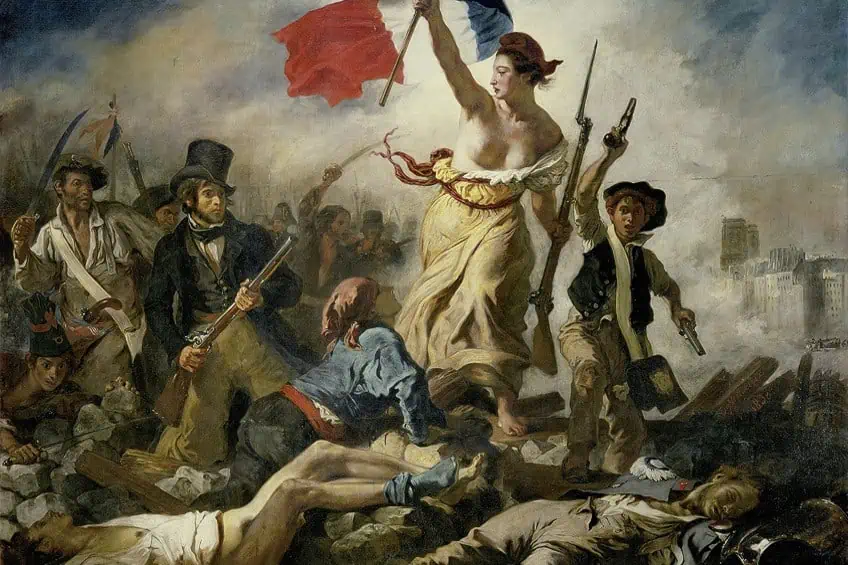“Liberty Leading the People” by Eugène Delacroix – A Quick Look
Liberty Leading the People by Eugène Delacroix is typically regarded to be the most iconic and recognizable French Revolution painting ever produced. The famous Liberty Leading the People painting features many of the elements that come to mind when people think of this period, such as scenes of chaos on the streets, people celebrating victoriously, and of course, the French flag. Why was this period so significant, and what is being portrayed in this iconic artwork? Below, we will answer these questions with our Liberty Leading the People analysis and description.
Contents
How to Understand Liberty Leading the People by Eugène Delacroix
| Artist Name | Eugène Delacroix (1798 – 1863) |
| Date Completed | 1830 |
| Medium | Oil on canvas |
| Dimensions (cm) | 260 x 325 |
| Location | Louvre Museum, Paris, France |
Delacroix produced this work to commemorate the 1830 July Revolution in which King Charles X was dethroned. In the center, we can see a powerful-looking female figure who seems to be leading a group of people in victory with the French flag flying majestically from her hand. She is said to embody the idea of Liberty, a figure that would also come to symbolize France itself. The work of art was initially shown to the public in 1831 at the Salon de Paris.
Delacroix produced a far more modern image when compared with those of his peers by mixing idealism and realism and using his distinctly expressive brushwork.
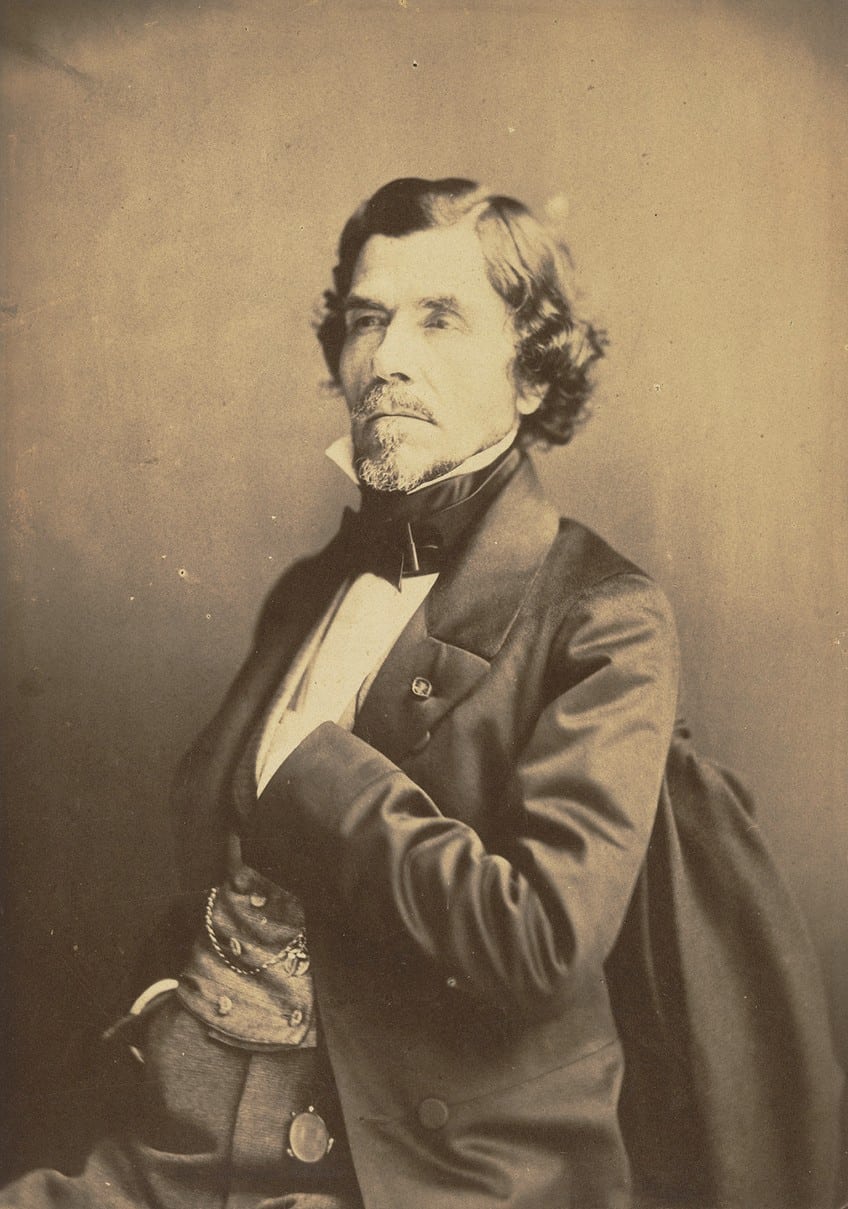
However, his critics and audience were divided as to whether the picture was distasteful or patriotic. In 1863, the artwork was then displayed at the Luxembourg Museum. The iconic piece was then transferred to the Louvre Museum in 1874, seven years after the artist’s death. Before we go any deeper into the meaning of this artwork, let’s begin by introducing you to Eugène Delacroix, the artist behind the Liberty Leading the People painting.
A Brief Introduction to Eugène Delacroix
| Artist Full Name | Ferdinand Victor Eugène Delacroix |
| Nationality | French |
| Date of Birth | 26 April 1798 |
| Date of Death | 13 August 1863 |
| Place of Birth | Charenton-Saint-Maurice, Île-de-France, France |
Eugène Delacroix was one of the Romantic movement’s most significant figures. He focused on depicting exotic landscapes, emphasizing dynamic composition, rich colors, and dramatic brushstrokes. Delacroix’s style was significantly different from that of Jean-Auguste-Dominique Ingres, his most notable rival, and was influenced by the works of Michelangelo and Peter Paul Rubens. He grew up in Saint-Maurice-en Chalencon and later relocated to Paris where he would sketch the animals in the local zoo.
In 1832, he traveled to Morocco, which would prove to be a very influential experience, as all of his subsequent works thereafter featured various exotic motifs.
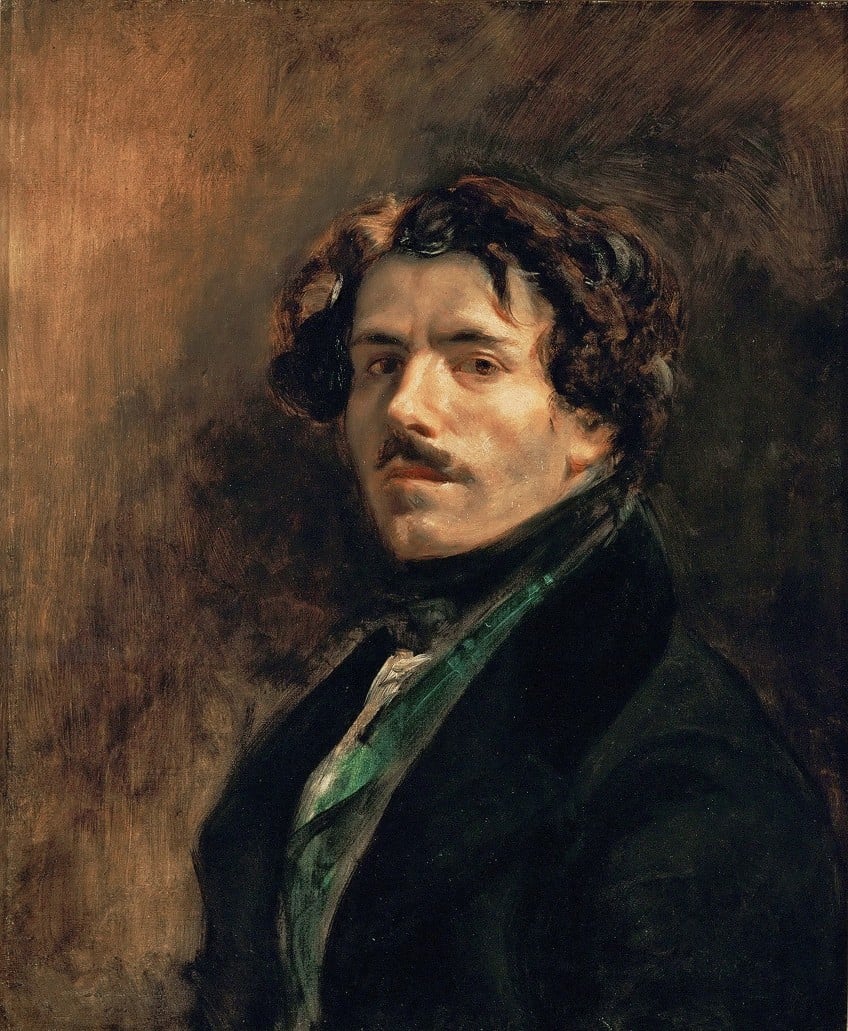
He passed away in 1863, after which his work was widely lauded by people such as Charles Baudelaire, the poet, and was likewise a big inspiration to artists such as Pablo Picasso, Pierre-Auguste Renoir, and Vincent Van Gogh. His artworks’ evocative qualities, which were unsurpassed at the time, had a long-lasting influence on subsequent generations of artists. His expressive brushstrokes influenced the artwork of the Impressionist painters and his love of the exotic motivated the Symbolists.
Manet and Renoir produced recreations of his works of art, while Degas bought a portrait of Baron Schwiter for his own collection. More than 9000 artworks have been attributed to the artist in total.
Liberty Leading the People Analysis
This massive oil on canvas French Revolution painting has become an international symbol of democracy, freedom, and liberty due to its political and allegorical significance. It is one of the most renowned works in art history, and it has been often used in popular culture to signify people’s independence from tyranny. The Liberty Leading the People painting is therefore typically regarded as Delacroix’s most significant work. The techniques and subject matter used in this artwork emphasize the difference between Romanticism art and the preceding Neoclassical movement.
In this iconic artwork, we can see the people of Paris, armed and marching under the tricolor flag. While the Revolution itself did nothing more than replace one king with another, Delacroix still found the event inspirational enough to produce a painting that ultimately celebrated the will of the French people and the idea of liberty more than it did the actual event itself.
In the foreground of the painting, we can see the bodies of the slain troops, which serves as a counterpoint to the figure of Liberty, who stands above them in all her power and majesty. The mound of bodies and ruins serves as a type of pedestal for Marianne, who walks proudly bare-breasted as well as barefoot. The French government initially bought the artwork, yet it was subsequently believed to glorify the concept of liberty too much. It was thereafter removed from public view by officials in 1832.
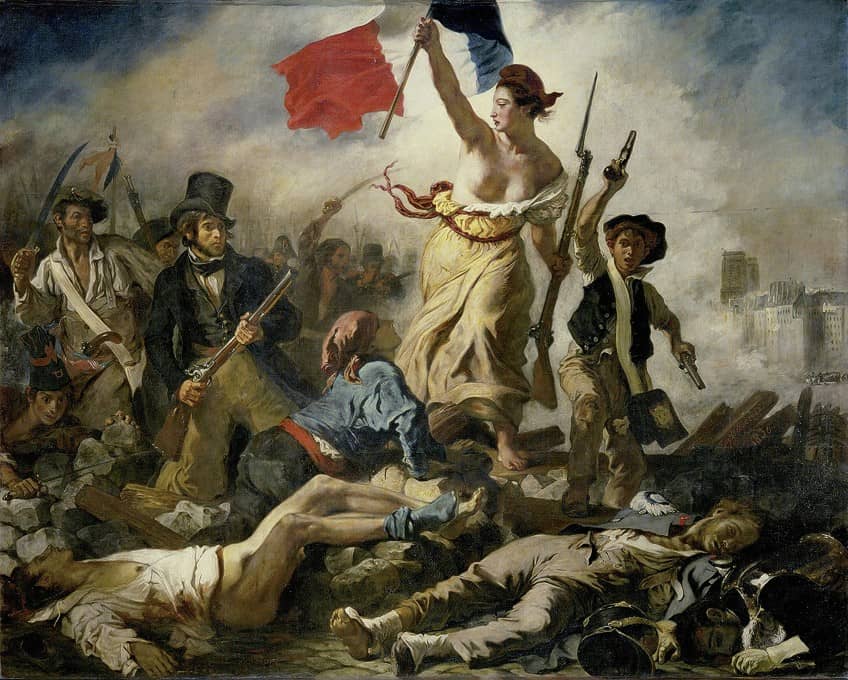
It was originally supposed to grace the Paris’ Palais du Luxembourg’s throne room, but it was instead returned to Delacroix. However, this did not sour the relationship between the state and the artist, who would go on to produce several other commissions for them. King Louis Philippe’s reign came to an end in 1848, after which time the Liberty Leading the People was finally put on public display.
It has been repurposed and appropriated many times through the years, most notably as the cover image for the album Viva La Vida (2008) by Coldplay, a rock band from England.
Composition
Produced in the autumn of 1830, this iconic artwork depicted a very significant event in the history of France. We can tell by the addition of Notre Dame Cathedral in the background that the setting for the piece is Paris. The Notre Dame Cathedral is the only building that the artist included in the composition.
The annihilated adversaries on the ground and smoke from their battle convey the impression that the conflict is finally coming to a close and that independence will lead the French people to a brighter future.
At the lower left corner, another person, a man dressed in a nightshirt and naked from the waist down, lays motionless. He may have been battered by his rivals at home and brought into the street as a display of force. In the opposite corner, a member of the royal army, identifiable by his blue coat, lies close to a fallen companion.
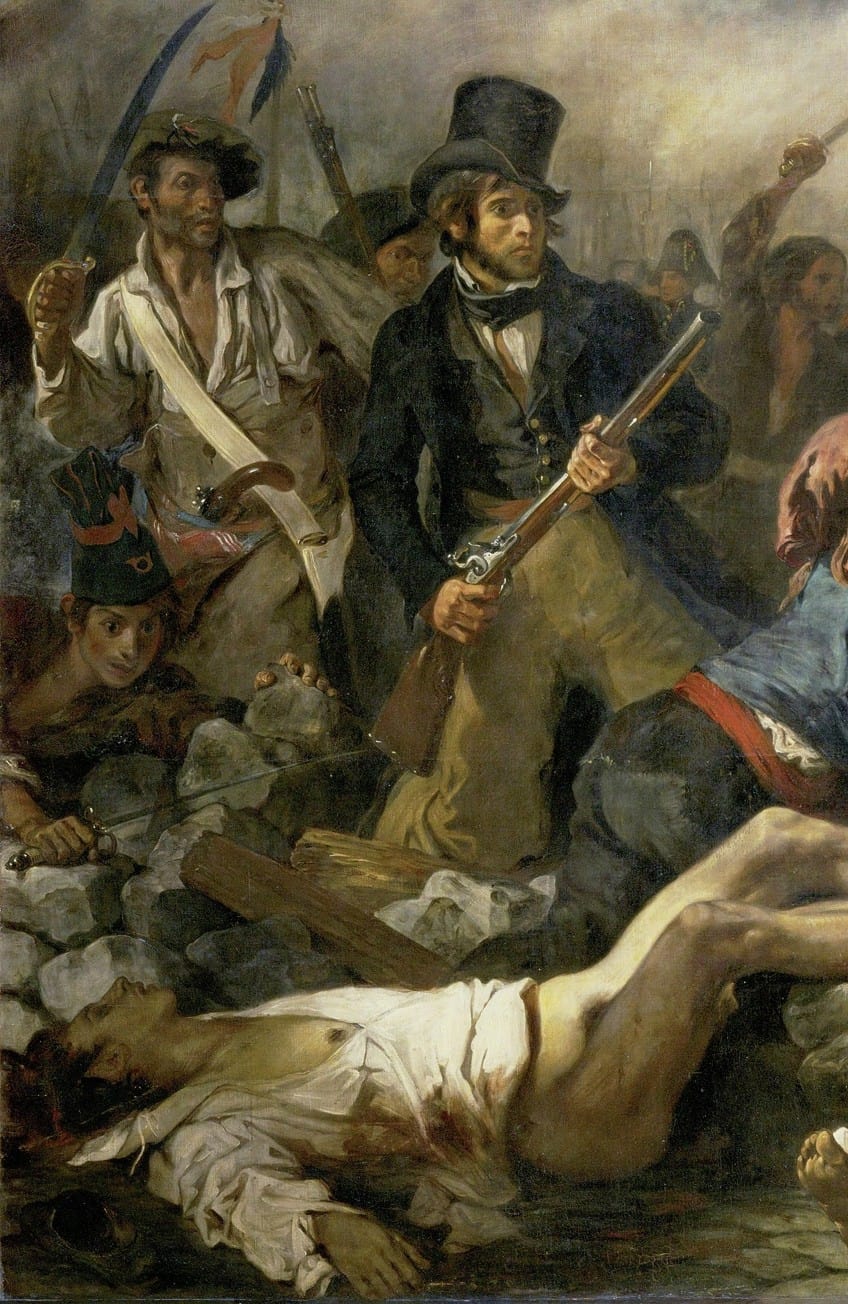
The composition of the artwork is based around a pyramid shape, with the dead at the base, the people of France in the middle, and the figure of liberty at the top. Delacroix wanted to represent people from many walks of French life in order to convey the varied backgrounds of the revolutionaries, including a wealthy gentleman wearing a top hat, soldiers, and even students. Eugène Delacroix was an innovator of color, and he strongly reflected this fact in this iconic work. In an aesthetic sense, the artwork also represented a kind of revolution – and even more so, it symbolized freedom.
During Delacroix’s time, artists mainly followed the standards of the Academy of Fine Arts, which emphasized proficiency in drawing. Delacroix, though, placed a greater focus on the use of color.
Symbolism
The woman at the apex of the pyramid composition not only represented liberty but was also regarded as the embodiment of the French Republic since the French Revolution, affectionately referred to as Marianne. Her garment turns around her body, tied with rope and hanging off her shoulders resembling heroic Greek statues. Depictions of her can be seen displayed at many public buildings around France, including law courts and town halls.
As an iconic French figure, Marianne represents resistance to royalty and democracy instead of oppression. Some critics, nevertheless, felt the seemingly filthy skin and underarm hair of the person in the artwork were too real for a personification of the idealized Marianne.
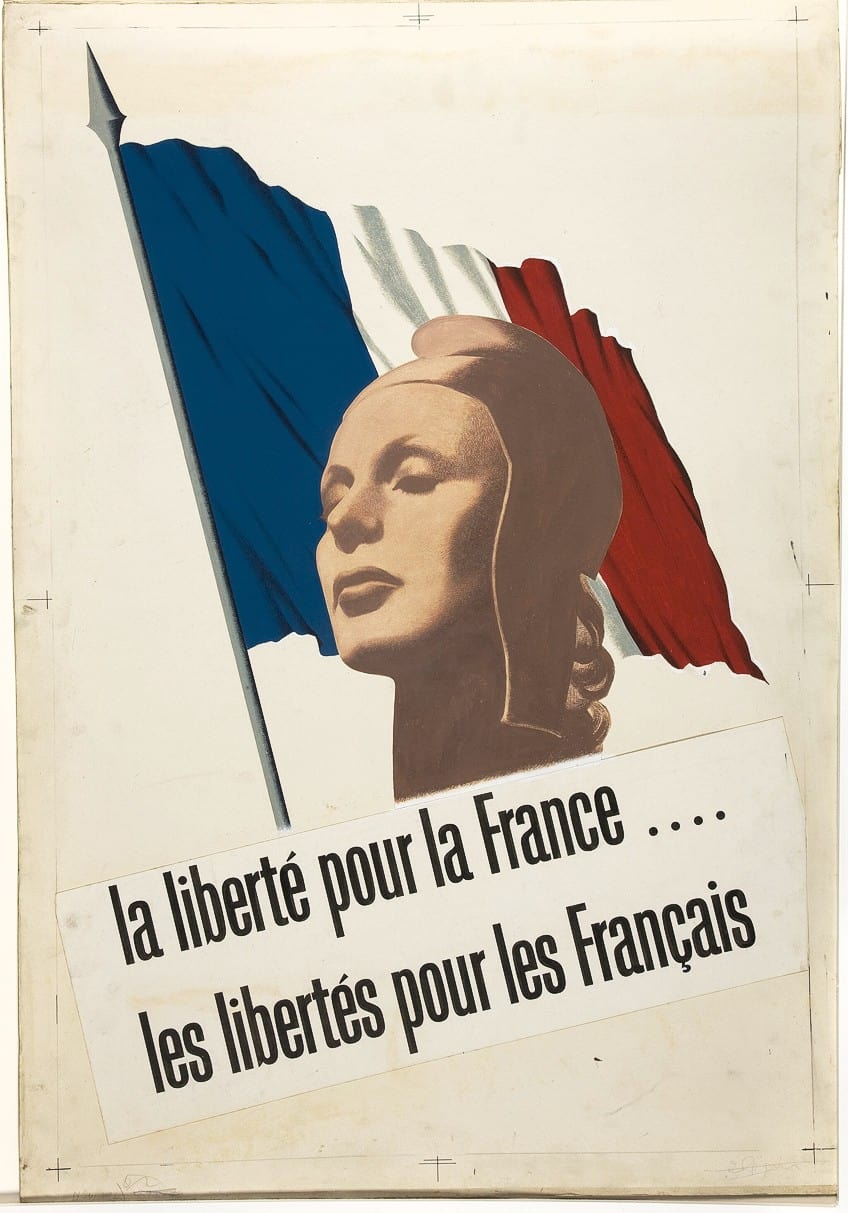
Marianne is typically portrayed proudly clutching the tricolor flag – the white, blue, and red flag used by the French revolutionaries. It would later be adopted as the official flag of the country. The French tricolor flag has become one of history’s most influential and important flags. Many other countries, both in Europe and beyond, have adopted its three-color system. She can be seen wearing a Phrygian hat, which was specifically selected by the Revolutionaries for its ancient symbolism and significance. It stood for freedom and was often worn by Roman and Greek slaves who had been freed.
A similar cap was worn by the seamen of the Mediterranean and later adopted by the people of France.
Context of the Liberty Leading the People Painting
The French Revolution marked an era of social and political instability in the late 18th century that gripped France. The Storming of the Bastille, which occurred on the 14th of July, 1789, signified the officially recognized start of the revolution. A mob of rioters, largely shop owners and craftsmen, stormed the Bastille on this particular day. The rebels planned to get the gunpowder stockpiled on the property in addition to liberating any political prisoners held inside, as it also served as a prison for the state.
This uprising occurred because the people of France became frustrated with France’s royal family, whose wealth and power contributed to their misery.
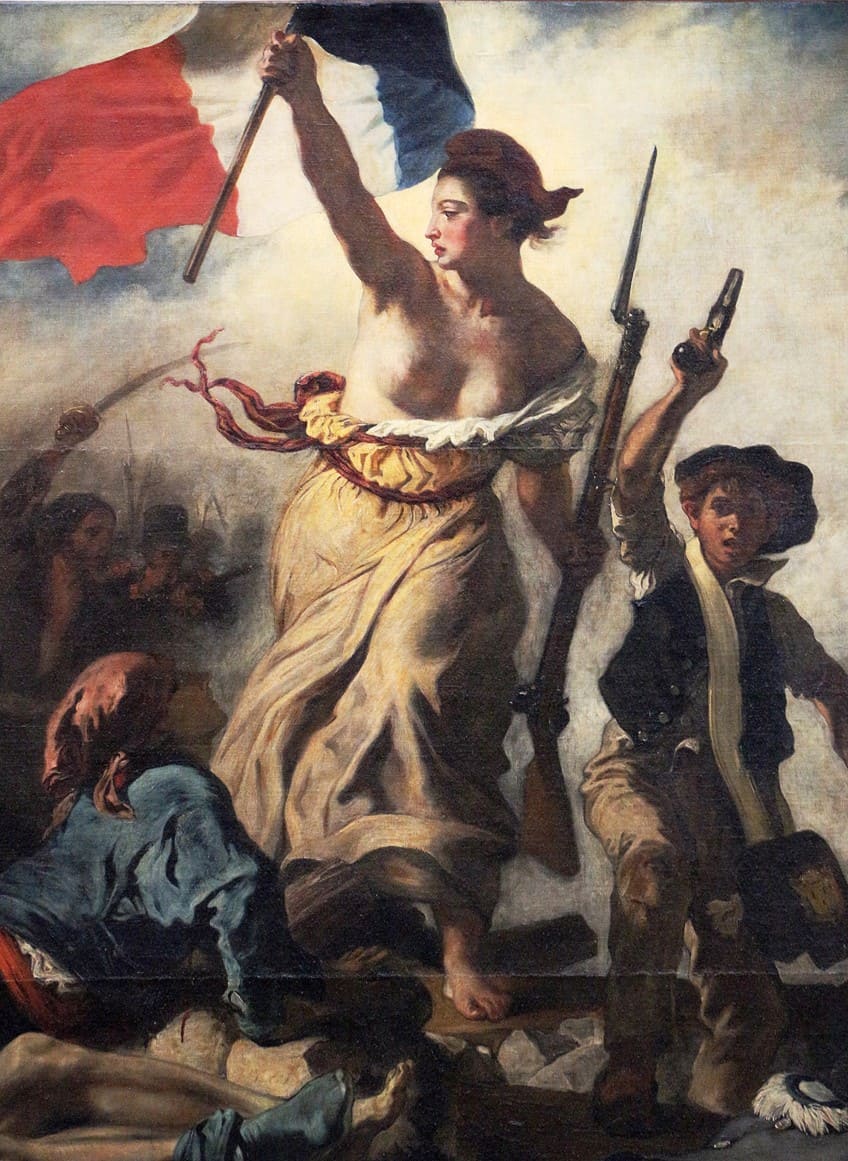
Because they were underpaid and overtaxed, French citizens were struggling to feed their families, leading to a series of conflicts. While the majority of these confrontations happened within a decade, others persisted into the 19th century, like the July Revolution, which Delacroix depicted in this painting.
The July Revolution
Delacroix created this painting in the same year that the July Revolution changed the direction of the history of France. It was also known as the Second French Revolution and lasted from July 27th to July 29th. This clash, like those fought throughout the Revolution, arose as an outcome of opposing opinions on who should lead the country. In this instance, the House of Orléans or the House of Bourbon were the two sides that people supported. The House Bourbon’s Charles X had been ruler of the country since 1824 at this point.
France stood up against the Country’s ruler, King Charles X, who was very disliked for being politically conservative and attempting to reinstate an old government that the citizens of France no longer wanted.
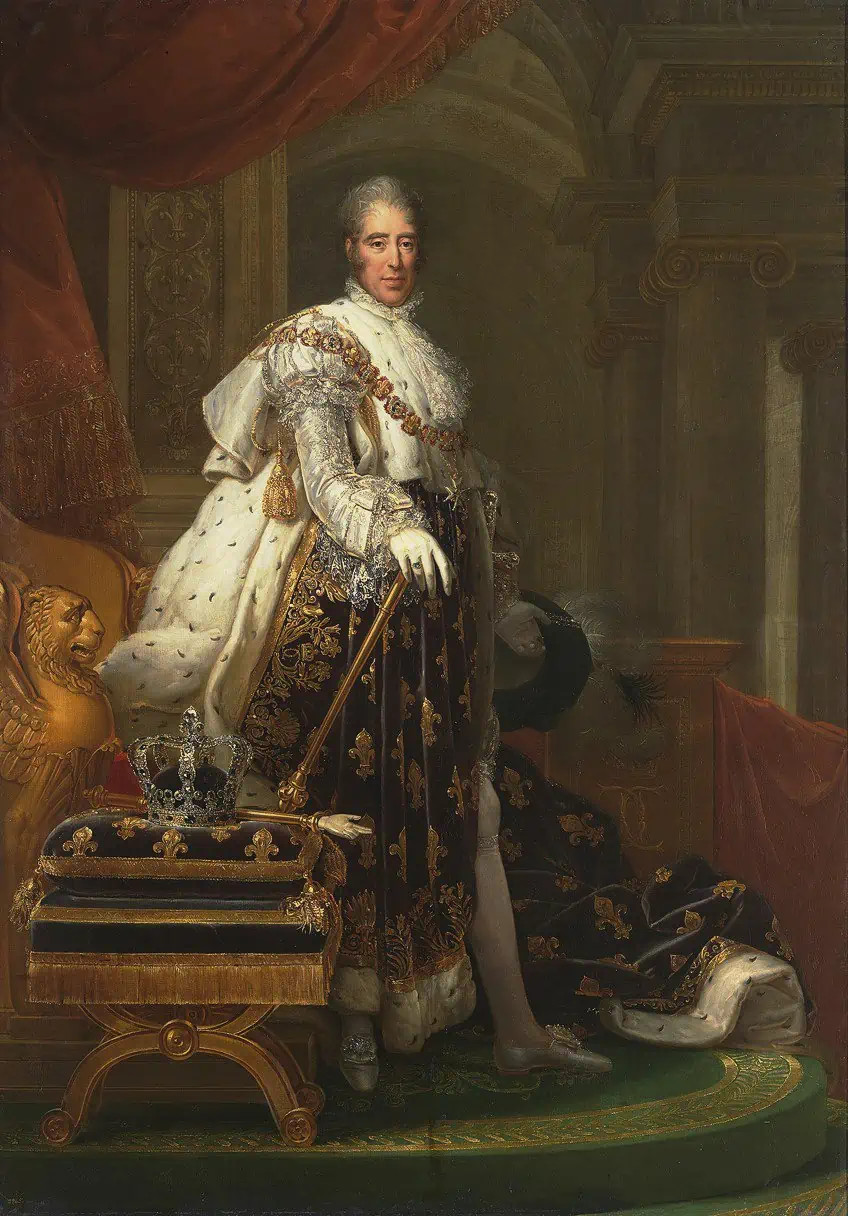
After a three-day battle, he was ousted and replaced by Louis-Philippe, the head of the House of Orléans. This shifted the country’s authority to the July Monarchy, a constitution-based kingdom, representing an important turning point in France’s series of revolutions – and prompting Delacroix to produce this famous work. He painted it to express his support for the struggle, pay tribute to those who gave their lives for the cause, and, most importantly, to honor France. He felt that if he did not fight for the country, the least he could do was try to paint it and commemorate such an important event.
That completes our look at Liberty Leading the People by Eugène Delacroix. While Delacroix may have had a good working relationship with the French government, who often commissioned works from him, the artist was still moved enough by the events of the July Revolution to produce this iconic artwork. Yet, it was viewed as being inflammatory and thus removed from the public eye and given back to the artist. After the change in monarchy, it was once again exhibited and today can be found displayed at the famous Louvre Museum, which is located in Paris, France. This famous artwork is known for representing the idea of liberty personified in the form of Marianne, a female figure who represented the Republic of France. In the artwork, she can be seen climbing a hill of bodies, leading the people of France, with the flag of the Revolution swaying in her hands. This tricolor flag would become so tied to the concept of freedom that many other flags would subsequently be influenced by its design and message of liberty and democracy.
Frequently Asked Questions
Who Produced the Liberty Leading the People Painting?
This famous artwork was produced by the renowned Romanticist artist, Eugène Delacroix. His paintings portrayed powerfully dramatic and emotional themes, and he was admired for his revolutionary use of color in the 19th century. His work influenced subsequent generations of painters, especially the Impressionist and Symbolist painters. His use of color and examination of moods and emotions foreshadowed countless creative developments in the late 19th and early 20th centuries. While he was known for his works that were influenced by the exotic and oriental, one of his most renowned works, the Liberty Leading the People painting, dealt with an actual historical event and was based in Paris. The painting features the embodiment of liberty as she leads a group of French citizens to victory.
Why Was the Liberty Leading the People Painting Produced?
The artwork is sometimes seen as a celebration of liberty’s victory and the immense power of the French population during the July Revolution, but it also emphasizes the unnecessary bloodshed and suffering that typically accompany such revolutions. In this painting, Liberty is represented as a female symbolic figure, guiding the people of France in their struggle for freedom. She can be seen leading people from all spheres of French society, from the richest men to students and soldiers. She is portrayed as ascending a mound of dead bodies.
Jordan Anthony is a Cape Town-based film photographer, curator, and arts writer. She holds a Bachelor of Art in Fine Arts from the University of the Witwatersrand, Johannesburg, where she explored themes like healing, identity, dreams, and intuitive creation in her Contemporary art practice. Jordan has collaborated with various local art institutions, including the KZNSA Gallery in Durban, the Turbine Art Fair, and the Wits Art Museum. Her photography focuses on abstract color manipulations, portraiture, candid shots, and urban landscapes. She’s intrigued by philosophy, memory, and esotericism, drawing inspiration from Surrealism, Fluxus, and ancient civilizations, as well as childhood influences and found objects. Jordan is working for artfilemagazine since 2022 and writes blog posts about art history and photography.
Learn more about Jordan Anthony and about us.
Cite this Article
Jordan, Anthony, ““Liberty Leading the People” by Eugène Delacroix – A Quick Look.” artfilemagazine – Your Online Art Source. November 7, 2023. URL: https://artfilemagazine.com/liberty-leading-the-people-by-eugene-delacroix/
Anthony, J. (2023, 7 November). “Liberty Leading the People” by Eugène Delacroix – A Quick Look. artfilemagazine – Your Online Art Source. https://artfilemagazine.com/liberty-leading-the-people-by-eugene-delacroix/
Anthony, Jordan. ““Liberty Leading the People” by Eugène Delacroix – A Quick Look.” artfilemagazine – Your Online Art Source, November 7, 2023. https://artfilemagazine.com/liberty-leading-the-people-by-eugene-delacroix/.


